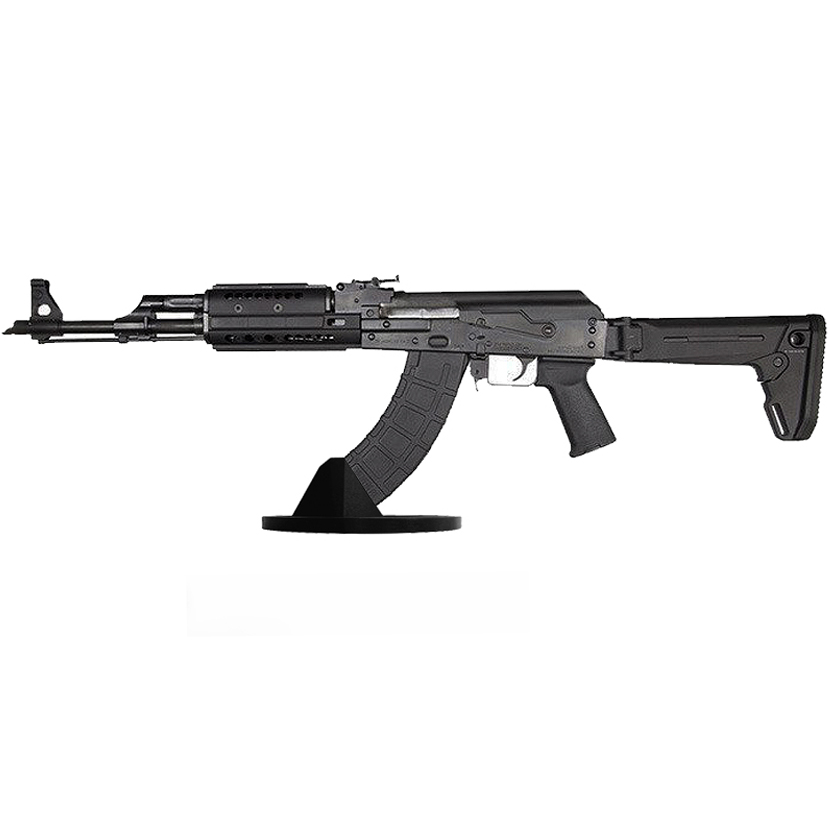
Categories:
The AK-47, one of the most iconic guns in history, is renowned for its durability, simplicity, and reliability in a variety of conditions. An often-overlooked yet critical component of this weapon is its handguard. The handguard is an essential piece that not only enhances the functionality of the rifle but also ensures the user’s safety and comfort during operation. Positioned around the barrel of the rifle, the handguard serves as a protective barrier, preventing the user’s hand from coming into direct contact with the barrel, which can become extremely hot after continuous firing.
The barrel of a gun like the AK-47 heats up rapidly due to the high temperatures generated by the combustion of gunpowder and the friction of the bullet traveling through the barrel. Without adequate protection, handling the weapon becomes uncomfortable and potentially dangerous, as severe burns could result from contact with the exposed metal. The handguard addresses this issue by providing an insulating layer that absorbs and dissipates heat, making the rifle more ergonomic and manageable during extended periods of use.
Traditional AK-47 handguards are typically made from wood, which has excellent heat-resistant properties. Even when subjected to prolonged heat, wooden handguards provide a comfortable grip without transferring the intense heat to the user’s hand. Modern variations of the AK-47 have seen the introduction of synthetic materials such as polymer, which offer similar or even superior heat-resistant characteristics while being lighter and more durable than wood.
This innovation ensures that the weapon remains user-friendly in diverse and demanding environments.
In addition to heat protection, the handguard also improves the overall control and stability of the rifle. By offering a steady surface to grip, it helps to mitigate the effects of recoil and allows for more accurate aiming. Some handguards come with additional features like mounts for accessories, further enhancing the versatility of the gun. Overall, the handguard is a vital component of the AK-47 that plays a crucial role in both protecting the user and enhancing the operational effectiveness of the weapon.
Handguards are an essential component of modern guns, serving multiple vital functions integral to both the safety and efficacy of the weapon. In the context of the AK-47, one of the most iconic guns ever designed, the handguard serves a distinctive and multifaceted role. Primarily, it acts as a protective barrier between the shooter’s hands and the barrel of the gun.
When a gun is discharged, the barrel heats up rapidly due to the combustion of gunpowder and the friction generated by the bullet traveling through it. Without a handguard, the shooter’s hand would be exposed to potentially severe burns, impairing both comfort and the ability to continue operating the weapon effectively.
Beyond its protective role, the handguard also contributes to the structural integrity and overall ergonomics of the gun. In an AK-47, the handguard covers the barrel but also allows for a comfortable and secure grip, which is critical for maintaining accuracy and control, particularly in a semi-automatic or fully automatic firing mode where recoil can be more pronounced. The material composition of handguards is often specifically chosen to withstand high temperatures and severe environmental conditions.
They may be constructed from various materials, including wood, polymers, and metals, each offering unique benefits such as heat resistance, weight reduction, and durability.
Additionally, modern handguards often feature modularity that enhances the versatility of the gun. They may come equipped with accessory rails, enabling the attachment of additional tactical equipment like scopes, flashlights, foregrips, and laser sights. This customization potential allows the gun to be tailored to specific operational requirements, enhancing its functionality in diverse combat scenarios.
In summary, the handguard is a crucial feature that not only protects the user from heat but also enhances the gun’s usability, comfort, and adaptability. In the AK-47, these benefits are particularly pronounced, allowing this renowned gun to maintain its reputation for reliability and effectiveness in various operational contexts.
The handguard of the AK-47 serves as a crucial component in the rifle’s overall design, primarily providing insulation to protect the user’s hand from the intense heat generated by rapid firing. The materials used in manufacturing AK-47 handguards have evolved over time, reflecting advances in technology and the varying needs of users. Traditionally, early AK-47 models featured handguards made from wood, typically birch or laminated hardwood.
These materials were chosen for their durability, availability, and ability to withstand harsh conditions encountered in diverse combat environments. Wooden handguards effectively dissipated heat while providing a secure grip, but they could become charred, crack, or warp under prolonged exposure to extreme temperatures. As guns technology progressed, so too did the materials used in the construction of AK-47 handguards. By the late 20th century, synthetic materials began to replace wood, offering superior heat resistance, reduced weight, and greater resilience to environmental factors.
One of the most commonly used synthetic materials is fiberglass-reinforced polymer. This material combination offers numerous advantages, including robustness, resistance to impact, and minimal thermal conductivity. The polymer composition helps to maintain the structural integrity of the handguard even during extended firing sessions, ensuring that the user’s hand remains protected from excessive heat while eliminating the risk of splintering or cracking that is associated with wooden counterparts.
In addition to fiberglass-reinforced polymers, some modern AK-47 handguards incorporate other advanced materials such as aluminum or steel. These metals are used primarily in the framework or heat shields within the handguard to further enhance the thermal protection. Aluminum, known for its excellent thermal conductivity and lightweight properties, helps rapidly dissipate heat away from the barrel, while steel offers extreme durability and mechanical strength.
However, handguards entirely made of metal can become uncomfortably hot after continuous firing; hence, they are often paired with polymer or rubberized surfaces that contact the user’s hand, providing an optimal balance between heat management and user comfort. In conclusion, the materials used in AK-47 handguards have evolved from basic wood to advanced composites and metals, each chosen for their specific properties to ensure user safety and efficiency.
Handguards play a crucial role in ensuring user safety and comfort when operating an AK-47 or similar guns. These components, typically made from wood, polymer, or metal, serve as a barrier between the hot barrel and the user’s hand. When a gun is fired, significant heat is generated in the barrel, which can quickly become too hot to touch. Prolonged or rapid firing exacerbates this condition, making the gun extremely uncomfortable or even dangerous to handle without proper insulation.
The primary function of a handguard is to provide thermal protection. By covering the barrel, it insulates the user’s hand from the direct heat produced during firing. This is particularly important in combat or tactical situations where the need for continuous and rapid operation of the gun is critical. Without a handguard, the heat transfer from the barrel could cause burns or discomfort, leading to decreased performance and potential harm to the shooter.
Materials used in handguards are selected for their thermal-resistant properties. Wood, although traditional, has inherent insulating characteristics that prevent heat transfer. Modern handguards often utilize polymer or composites, which offer superior resistance to heat and are often lighter and more durable. Metal handguards, usually aluminum, incorporate heat shields or cooling fins designed to dissipate heat more effectively. Additionally, some handguards are ventilated, featuring slots or holes that enhance air circulation around the barrel to aid in cooling.
The design of the handguard not only protects the user but also contributes to the overall balance and handling of the gun. Enhancements such as ergonomic grips and attachment points for accessories can further improve operational comfort and efficiency. By providing both thermal protection and ergonomic benefits, handguards are an essential component of modern guns, ensuring that users can maintain steady control and continue firing accurately, even under demanding conditions.
The synergy between functionality and protection underscores the importance of a well-designed handguard in the overall performance and safety of a gun.
The design variations of AK-47 handguards have evolved significantly since the weapon’s inception, illustrating advances in materials science and ergonomic considerations. Initially, the standard AK-47 was equipped with wooden handguards, reflecting the materials available and manufacturing processes common in the mid-20th century. These wooden handguards, typically made from birch or laminate, proved effective in withstanding heat generated by sustained fire, though they added considerable weight to the gun.
As the AK-47’s usage expanded globally, different countries and manufacturers began producing their own versions with varying handguard designs. The quest for lighter and more durable materials led to the introduction of polymer handguards. Polymer, being heat-resistant and lighter than wood, significantly improved user comfort and handling, especially during extended use. These polymer variants often featured heat shields or metal liners to further protect the user’s hands from excessive heat buildup.
Some modern designs include aluminum or reinforced fiberglass handguards, which strike a balance between durability and weight reduction. Manufacturers often incorporate rails into these modern handguards, allowing users to attach various accessories such as tactical lights, vertical grips, or laser sights. This adaptability enhances the rifle’s usability in different combat scenarios, making it a versatile tool for modern operators.
Ergonomic improvements have also been a key focus in handguard design. Contemporary manufacturers often introduce textured or ribbed surfaces to enhance grip stability, even in adverse conditions. Additionally, modern handguards may be designed with modularity in mind, providing customizable sections that can be replaced or adjusted according to user preference.
The adoption of different attachment systems is another significant advancement. The traditional AK-47 handguard uses a simple, secure clamping mechanism that requires minimal tools for removal or replacement. However, some modern versions employ advanced quick-detach systems, allowing users to rapidly switch handguards without specialized equipment, an important feature for maintenance and adaptability in the field.
These design variations reflect the continuous evolution of the AK-47 platform, adapting to the changing needs and preferences of users worldwide. As newer materials and technologies emerge, future handguard designs will likely continue to enhance the effectiveness and comfort of this iconic gun.
Installation and maintenance of AK-47 handguards are critical for ensuring the weapon operates effectively and safely. Proper installation is crucial first step. Begin by ensuring the gun is unloaded for safety. Remove the receiver cover and bolt carrier assembly by depressing the recoil spring assembly while lifting the cover. Next, remove the gas tube by lifting the lever on the right side of the rear sight block.
Once the gas tube is off, the lower handguard can be removed by pushing the retaining lever forward and pulling the handguard down and away from the barrel.
Installing a new handguard essentially reverses the disassembly process. Slide the new lower handguard into place, ensuring it fits snugly against the barrel and front retainer. Secure it by pushing the retaining lever back into its locked position. For the upper handguard, the new gas tube with the handguard will need to be aligned and positioned correctly. Slide the gas tube back into place, ensuring it lines up properly with the rear sight block.
Lock the gas tube in place by rotating the lever back down. Once both handguards are secure, the bolt carrier assembly and receiver cover can be reinstalled.
Maintenance of the handguards is equally important. Wooden handguards, for instance, should be checked regularly for cracks or other damage, as compromised integrity can reduce heat shielding effectiveness. Clean the handguards with a damp cloth to remove any grit or residue, and avoid soaking the wood as this can cause swelling or warping. Metal or polymer handguards require less delicate handling but should still be checked for wear or damage.
For metal handguards, inspect for rust or corrosion and treat any affected areas promptly to prevent erosion. Polymer handguards should be inspected for cracks or warping, especially after extended exposure to high temperatures from sustained shooting.
Regular maintenance extends beyond the physical condition of the handguards. Periodically remove the handguards to inspect the underlying barrel for rust, residue, or other issues that could compromise performance. By regularly maintaining and correctly installing the AK-47 handguards, users can ensure their gun remains in optimal condition, serving them reliably while protecting their hands from the heat generated by extended firing sessions.
Handguards on an AK-47 play a crucial role in enhancing both the safety and performance of the gun. By covering the barrel, they serve as an essential barrier between the intense heat generated during firing and the user’s hand, thus preventing potential burns and injuries. As the heat dissipates along the barrel with each successive shot, the handguard ensures that the user’s handling of the gun remains secure and comfortable.
This is particularly vital during extended periods of use, whether in training scenarios, competitive shooting, or actual combat situations, where the barrel can rapidly become too hot to touch.
The design of the handguard directly impacts the overall efficiency and effectiveness of the AK-47. A well-engineered handguard not only keeps the heat away from the shooter’s hand but also contributes to the weapon’s balance and handling dynamics. Modern handguards, made from advanced materials such as reinforced polymer or aluminum, offer improved heat resistance while adding minimal weight to the gun.
This allows users to maintain their grip and control, which are critical for accurate shooting.
Furthermore, many handguards are designed with additional functionalities in mind, such as accessory attachment points for items like tactical lights, lasers, or foregrips. These added capabilities can significantly enhance the rifle’s versatility, allowing it to be customized to fit the specific needs of various scenarios and users. Ergonomically designed handguards can also provide better grip textures, ensuring that the weapon remains firmly in the user’s hands despite sweat, rain, or other conditions that might otherwise impede a firm grasp.
Overall, the AK-47 handguard is not merely an accessory but a vital component that ensures both the safety and the high performance of the gun. By effectively shielding the user’s hand from the barrel’s heat and providing essential functions that improve handling and adaptability, the handguard is indispensable for anyone seeking to optimize their use of this iconic weapon. The blend of safety features and performance enhancements make the handguard a key element in achieving superior control, comfort, and operational efficiency.
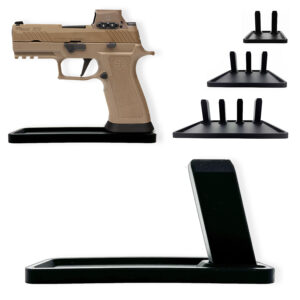
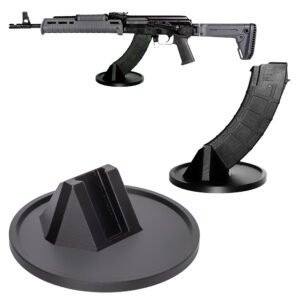

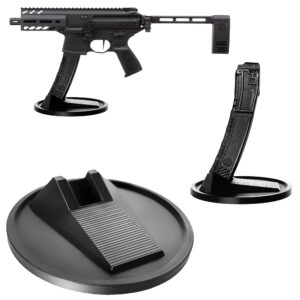
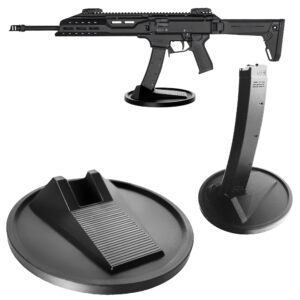


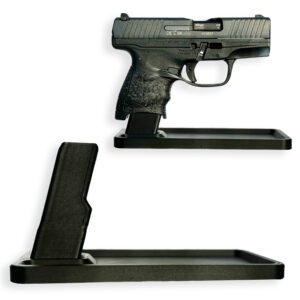
Colt
Colt M4 Carbine
Colt LE6920
Colt AR-15 A4
Daniel Defense
DDM4 V7
DDM4 V9
DDM4 V11
DDM4 ISR (Integrally Suppressed Rifle)
Smith & Wesson (S&W)
M&P15 Sport II
M&P15 Tactical
M&P15T
Bravo Company Manufacturing (BCM)
BCM Recce-16
BCM Recce-14
BCM MCMR Series
Aero Precision
M4E1 Series
AC-15
AR15 Pistol (Various Configurations)
Ruger
Ruger AR-556
Ruger SR-556
Ruger AR-556 MPR (Multi-Purpose Rifle)
Springfield Armory
Saint Victor
Saint Edge
Saint AR-15
PSA (Palmetto State Armory)
PSA PA-15
PSA AR-V
PSA Jakl (AR Pistol)
FN America
FN 15 Tactical Carbine
FN 15 Patrol
FN 15 DMR
Wilson Combat
Recon Tactical
Super Sniper
Protector Carbine
SIG Sauer
SIG M400 Tread
SIG M400 Elite
SIG M400 SDI
LWRC International
IC DI (Direct Impingement)
IC SPR
IC A5
Bushmaster Guns
XM-15 QRC
Bushmaster MOE
XM-15 Patrolman
Rock River Arms
LAR-15 Entry Tactical
LAR-15 Predator
LAR-15 Elite Comp
Stag Arms
Stag 15 Tactical
Stag 15L (Left-Handed Models)
Stag 15 Valkyrie
Noveske Rifleworks
Noveske Gen 4 N4
Noveske Space Invader (AR Pistol)
Noveske Recon
Anderson Manufacturing
AM-15 Optic Ready
AM-15 M4 Carbine
AM-15 Precision Rifle
Adams Arms
AA-15 Piston Rifle
P2 AARS (Adams Arms Rifle Series)
Black Rain Ordnance
SPEC15 Series
BRO Predator
Fallout 15
Diamondback Guns
DB15 Series
DB15CCMLB
DB15EB
Del-Ton Inc.
DTI-15
Del-Ton Echo 316H
Sierra 316M
Windham Weaponry
Windham SRC
Windham VEX-SS
Windham RMCS-4 (Caliber Conversion System)
Christensen Arms
CA-15 G2
CA-15 Recon
CA-15 Titanium Edition
Patriot Ordnance Factory (POF-USA)
Renegade Plus
P415 Edge
Revolution DI
LaRue Tactical
PredatAR
OBR (Optimized Battle Rifle)
LaRue Stealth 2.0
Battle Arms Development
Workhorse Patrol Carbine
BAD556-LW (Lightweight)
Authority Elite Rifle
Faxon Guns
Ascent AR-15
FX-19 (AR Pistol)
Streamline Ultralight Series
KE Arms
KE-15 SLT (Super Lightweight Tactical)
KE-15 Scout Carbine
Primary Weapons Systems (PWS)
MK1 MOD 2-M
MK116 PRO
MK107 (Piston AR Pistol)
ZEV Technologies
ZEV Core Elite Rifle
ZEV AR15 Billet Rifles
Franklin Armory
BFSIII AR-C1
Militia Model
F17-L (Chambered in .17 WSM)
Seekins Precision
SP15 DMR
NX15 Skeletonized Rifle
Havak Bravo
Aero Precision (Additional Models)
EPC-9 (Pistol Caliber ARs)
VG6 AR Rifles
Barrett Guns
REC7 DI
REC7 Gen II
CMMG
MK4 RCE
Resolute 300
Banshee (AR Pistol)
DPMS Panther Arms
Panther Oracle
Panther LR-308
H&K (Heckler & Koch)
HK MR556A1
HK416 (Military Variant)
Rock Island Armory (Armscor)
VR-80 Tactical AR (Shotgun AR Platform)
Troy Industries
Troy SPC-A3
Troy PAR (Pump Action AR)
Wilson Tactical
Tactical Recon AR
Protector Series
F1 Guns
FDR-15 Skeletonized Rifle
BDRx-15 Series
Juggernaut Tactical
JT-15
JT-10 Precision Rifle
AeroSurplus
Surplus AR-15 Rifles (Budget Models)
Thunder Tactical
AR-15 Basic Carbine
Tactical Builder Sets
Radical Guns
RF-15
Forged AR-Series
Dark Storm Industries
DS-15 Featureless Rifles
DS-10 Typhoon
DRD Tactical
Paratus
Aptus AR Rifles
Bear Creek Arsenal
BCA-15
AR Complete Upper Builds
Aero Survival Rifles (ASI)
ASR Tactical Series
Tactical Edge
WARFIGHTER Series
AR-15 Lightweight Rifles
Lone Star Armory
TX15 DMR
TX15 Carbine
HERA Arms
HERA H7
HERA AR-15 Lower Builds
IWI (Israeli Weapon Industries)
Zion-15
DRD Tactical
Tactical Modular Rifles
Quick-Takedown Rifles
V Seven Weapons
1776 Rifle
Hyperlite Rifle
Core Rifle Systems
Core15 Tac III
Core15 Patrol Rifle
Armalite (Original AR-15 Creator)
M15 Tactical
M15 A4 Carbine
DEF15 (Defensive Sporting Rifle Series)
PSA (Palmetto State Armory Additional Models)
PSAK-47 Hybrid (AR-AK Style Hybrid)
PSA Dagger (Pistol Caliber Configurations)
Odin Works
OTR-15
Odin Recon Rifle
Maxim Defense
MDX-508 PDX (Compact AR Pistol)
MDX-510 Rifle